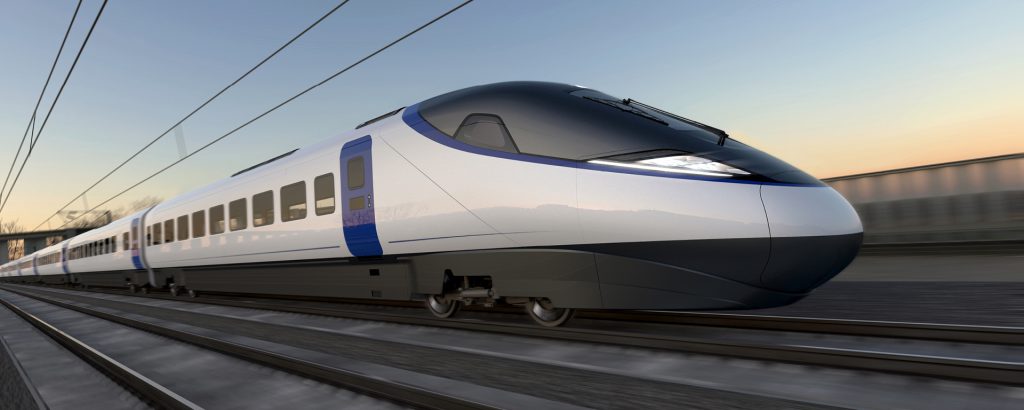Got a question? Get in touch to speak to one of our specialists
In our previous blog, we discussed some of the structures – bridges and stations – where temporary works systems are needed for key rail infrastructure developments, such as HS2 in the UK.
In addition to HS2, there continues to be a real focus on developing rail across Europe, given its status as one of the most sustainable forms of passenger and freight transport. Indeed, last year was named the ‘European Year of Rail’.
Having set strategic milestones of doubling high-speed rail by 2030 and tripling it by 2050, the EU is committed to boosting long-distance and cross-border passenger rail, and recently devised an action plan to help make rail a more attractive option for long and cross-border journeys. From accelerating digitalisation and removing redundant technical and operational rules, to modernising passenger rail infrastructure and bringing railway staff training and certification in line with future needs, the plan is part of a package of measures for efficient and green mobility.
HS2 shares these goals – delivering more capacity, cutting carbon emissions, and enabling greater connectivity.
What, then, are the other common rail infrastructure structures that we need to consider formwork, falsework and ground shoring for? Here, we’ll explain some of the key factors that decision-makers need to bear in mind for tunnels and groundwork excavations.
Having set strategic milestones of doubling high-speed rail by 2030 and tripling it by 2050, the EU is committed to boosting long-distance and cross-border passenger rail, and recently devised an action plan to help make rail a more attractive option for long and cross-border journeys.
From accelerating digitalisation and removing redundant technical and operational rules, to modernising passenger rail infrastructure and bringing railway staff training and certification in line with future needs, the plan is part of a package of measures for efficient and green mobility.
Tackling tunnels
First, tunnel construction will depend on the ground and groundwater conditions, the length, diameter, depth and shape of the tunnel, plus how to make sure the tunnel excavation is a safe and efficient working environment.
When considering formwork and shoring, the cross-sectional shape of the tunnel and the method of construction will determine the type of temporary works solution used – for instance, a hard rock tunnel would need to be blasted. For shorter tunnels that might be passing beneath a rail embankment, for example, a more ‘off-the-shelf’ temporary works system might be sufficient, whereas a more bespoke solution might be needed for longer tunnels.
Other questions that need to be asked include whether the entire tunnel will be cast in one section, or whether the slab, walls and roof will be cast separately? Innovative solutions such as a hydraulic casting system on castor wheels, whereby once the concrete is cured then the system can be struck and moved onto the next pour, can make a big difference in meeting tight deadlines and ambitious construction cycles.
Requirements will also depend on whether the tunnel project is a cut-and-cover tunnel, a bored tunnel, an immersed tunnel, or blasted in the case of hard rock. For example, with a cut-and-cover tunnel, one aspect that should not be overlooked is the propping requirements during excavation and of the retaining walls. The loads associated with large excavations are often enormous, and specialist horizontal temporary propping solutions will be the best means of providing the temporary support required. There’s the option of hydraulic solutions, which offer finite adjustments and monitoring of loads, but these also add more cost to a project.
Digging deeper into groundworks
For large-scale rail infrastructure projects, groundworks play an integral role in facilitating core structures, not to mention the construction of the track itself. The sheer volume of excavation works required on rail developments means geotechnical engineering is key to determining ground conditions. This, in turn, has a significant influence on the enabling works and structural support. Most ground shoring will be required to support foundation excavations, service diversion trenches, or station boxes with piling or diaphragm walls.
Other factors that come into play include the excavation’s geometry, as well as any behavioural or performance requirements. Its location will affect the choice of temporary works support too – is the construction site in an urban area, a congested location, or a green field site? The groundworks and ground shoring needs will be influenced by all of these, with potential ground movement and wall deflections and their impact on nearby buildings having to be factored into the decision.
With deeper excavations, or where cofferdams and tanks are being installed, ground shoring support will be required to meet the demands of increasingly sophisticated designs. For example, excavation works for multi-level stations are vast and complex. Multiple levels of temporary or permanent propping will be needed to support the perimeter wall to allow excavation works to safely progress towards the formation level. Meanwhile, higher single-sided wall construction is required when working back out and up the excavation. Furthermore, it’s essential to consider the size and spacing of equipment, with all systems being assessed for fit and clash detection to avoid problems further down the line.
We hope we’ve answered some of the key issues you need to think about when choosing a temporary works solution for a rail project, but if you’ve got any further questions then please don’t hesitate to get in touch.

